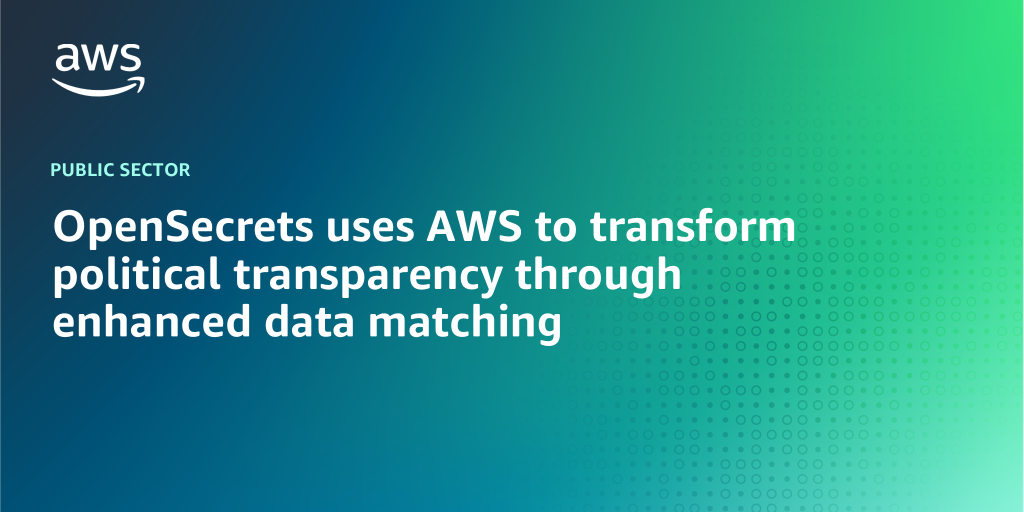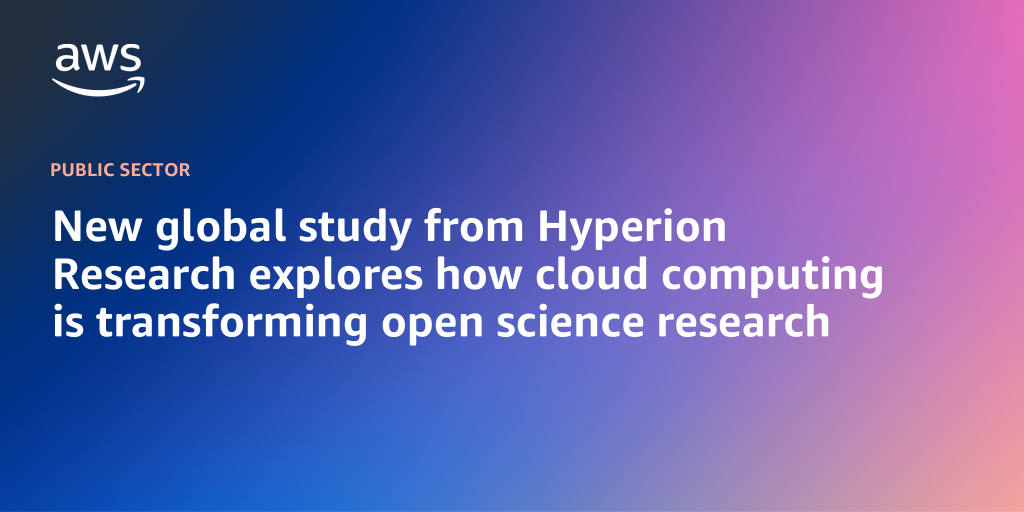AWS Public Sector Blog
Tag: database
OpenSecrets uses AWS to transform political transparency through enhanced data matching
OpenSecrets is a nonpartisan, independent nonprofit organization whose mission is to serve as the trusted authority on money in American politics. Its vision is for Americans to use data on money in politics to create a more vibrant, representative, and responsive democracy. Through the AWS Imagine Grant—a public grant program that provides both cash and AWS credit funding to registered nonprofit organizations that are using cloud technology to accelerate their missions—OpenSecrets embarked on an ambitious project to revolutionize its political contribution database
New global study from Hyperion Research explores how cloud computing is transforming open science research
In an era where scientific discovery transcends borders, cloud computing is helping advance how researchers collaborate and innovate across the globe. Now available for download, The Value of Utilizing Cloud Service Providers for Open Science Research report—produced by Hyperion Research and sponsored by AWS— explores how and why researchers use cloud to accelerate open science research. Read this post to learn more.
Near real-time dashboards from a source database to a cloud data warehouse on AWS
Organizations require solutions for real time or near real time dashboards that can be provided to their customers without impacting their database performance or service level agreements (SLAs) to their end users. In this post, we showcase the integration of Amazon Web Services (AWS) capabilities to present an end-to-end architecture for this data flow.
Powering Singapore’s genomic research with AWS and Illumina
Precision medicine is a data-driven approach that considers individual variations in genetics to allow healthcare professionals to more accurately predict, prevent, diagnose, or treat different groups of people. As part of ongoing research to advance genomic research in Singapore, companies like Amazon Web Services (AWS) and Illumina play a pivotal role in genome sequencing and analysis, and providing the tools and technology needed to analyse large-scale genomic datasets to help decode the risk factors for certain Asian-specific chronic diseases.
Bamboo Health minimizes downtime for critical services with Amazon RDS blue/green deployments
In the world of prescription drug monitoring, pharmacies rely on continuous access to data and software for responding to vital patient needs. This post highlights how one digital healthcare technology organization, Bamboo Health, provides critical access to prescription-monitoring services with the help of Amazon Web Services (AWS) and Amazon Relational Database Service (Amazon RDS).
Hydrating the Natural History Museum’s Planetary Knowledge Base with Amazon Neptune and Open Data on AWS
The Natural History Museum (NHM) in London is a world-class visitor attraction and a leading science research center. NHM and Amazon Web Services (AWS) have partnered up to transform and accelerate scientific research by bringing together a broad range of biodiversity and environmental data types in one place for the first time. In an earlier post, we discussed NHM’s overall vision for using open data in combination with large-scale compute, data systems, and machine learning (ML) to create the Planetary Knowledge Base (PKB), a knowledge graph of global biodiversity. In this post, we focus on the underlying services and architecture that comprise the PKB.
5 best practices for accelerating research computing with AWS
Amazon Web Services (AWS) works with higher education institutions, research labs, and researchers around the world to offer cost-effective, scalable, and secure compute, storage, and database capabilities to accelerate time to science. In our work with research leaders and stakeholders, users often ask us about best practices for leveraging cloud for research. In this post, we dive into five common questions we field from research leaders as they build the academic research innovation centers of the future.
Alzheimer’s disease research portal enables data sharing and scientific discovery at scale
The National Institute on Aging Genetics of Alzheimer’s Disease Data Storage Site (NIAGADS DSS), powered by AWS, is a genomic database that provides access to publicly available datasets for Alzheimer’s disease and related neuropathologies. Created to make Alzheimers-genetics knowledge more accessible to researchers, NIAGADS has genomics data on 172,701 samples from 98 datasets and is now 1.3 petabytes (PB) in total size. NIAGADS is creating a system that promotes scientific discovery through data sharing with a large cadre of institutions.
How graph databases can enhance learning
Graph database solutions like Amazon Neptune from AWS help organize learner information to enable more holistic analysis for educational institutions and education technology companies (EdTechs). By linking learner data from multiple sources and drawing new correlations from data, educators can deliver more personalized learning experiences. In this blog post, learn how educators can use graph databases to enhance the learning experience.
Data is helping EdTechs shape the next generation of solutions
Forrester estimates that data-driven businesses are growing at an average of more than 30 percent annually. This is also happening at education technology companies. With new data sources have emerging, including real-time streaming data from virtual classrooms, mobile engagement, unique usage, and new learners, these data sources are shaping the next generation of EdTech products that engage learners meaningfully around the world. Learn how four AWS EdStart Members are utilizing data to power their solutions.









